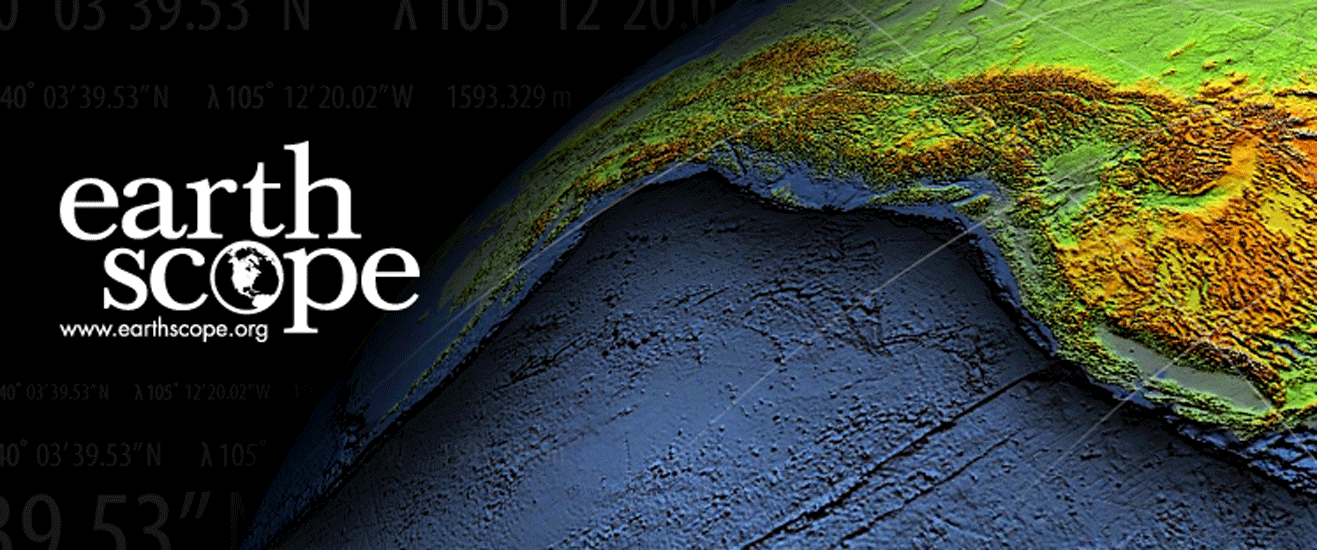By Megan Anderson (CC), Kate Miller (TAMU), Susan Beck (UA), and Margarete Jadamec (UH) - Fall 2014
The structural dissimilarity between basement-involved arches and thin-skinned fold and thrust belts, as well as the inboard location of basement arches, prompts a question that has persisted in the tectonic community: do the arches form as a result of the rheology at the transition between mobile belt and cratonic lithosphere, or do they result from stress/strength conditions driven by deeper processes such as low-angle subduction? In areas like the Sierras Pampeanas in Argentina, basement arches have developed inboard of the subduction zone but occur only intermittently along strike. These basement cored uplifts correspond in space and time with present-day low angle subduction in South America and are often referred to as a modern analogue for the Laramide basement cored uplifts in the western U.S. thought to be associated with flat slab subduction.
In light of recent results from seismological experiments in South America and North America, a workshop was organized to reconsider how the lower crust, slab, and mantle are involved in basement arch formation, and what rheologies for lithospheric components are compatible with crustal structural models. The 2.5 day workshop was held at the University of Arizona, Tuscon, in February 2014, with 40 participants in attendance from Argentina, Australia, Canada, and the United States. The interdisciplinary group included seismologists, structural geologists, volcanologists, and geodynamicists.
The workshop began with four keynote presentations: The Sierras Pampeanas and Flat Slab Subduction (Susan Beck, University of Arizona), The Laramide Orogeny (Anne Sheehan, University of Colorado), Frontiers in Modeling Subduction Dynamics and Overriding Plate Deformation (Margarete Jadamec, University of Houston), and Intraplate Basement Uplifts in Central Australia (Russell Korsch, Geoscience Australia). The keynotes were followed by a series of short panel presentations and more in-depth breakout groups charged with examining (a) how rupture of cratonic or long-stable ancient lithosphere initiates, (b) similarities and differences in lithosphere rheology and composition leading to basement cored uplifts, (c) the role of pre-existing structure, (d) causes of flat slab subduction, (e) temporal and spatial patterns of arch formation, and (f) connections between basement arches and flat slab subduction.
A strong lithospheric rheology was identified as a common element for the basement arches examined, however the reasons for a strong rheology were not clear in all cases. Variable rheology was identified as important for arch complexity. Key unknowns regarding the deeper parts of these systems include, 1) the extent of slab dehydrating in flat-slab regions, 2) the related extent to which the overriding lithosphere is hydrated, 3) how to best interpret seismological images of the lower crust in terms of structure, and 4) accurate lithospheric temperature profiles in basement arch regions.
The group recommended a stronger link between geodynamical modeling and observational constraints as a key pathway to constraining lithospheric temperature, the transmission of stress through the crust between arches, and the transmission of stress from subducting plate to the overriding lithosphere. Comparative studies of basement arches on different continents as well as comparative studies of regions with and without basement arches along the same subduction zone were suggested. Studies should include onshore and offshore seismic data and/or synthesis of broadband and active source data to connect crustal structures accommodating deformation between arches.
Basement arch regions represent zones at a tipping point of critical stress within continental interiors and thus have broader implications for the tectonic and seismologic communities. A better understanding of their deformation could serve as a barometer for lithospheric rheology. In addition, more systematic connection between modeling and data constraints could lead to the development of better predictive models for earthquake hazard in continental interiors.
The workshop was co-sponsored by the NSF Eastern Sierras Pampeanas Experiment and the NSF Bighorns Arch EarthScope Project, and co-organized by Megan Anderson, Susan Beck, and Kate Miller. A session at the 2014 AGU Fall Meeting, Causes and Consequences of Subduction, has been organized following from the workshop. We thank the workshop participants for insightful discussions.





